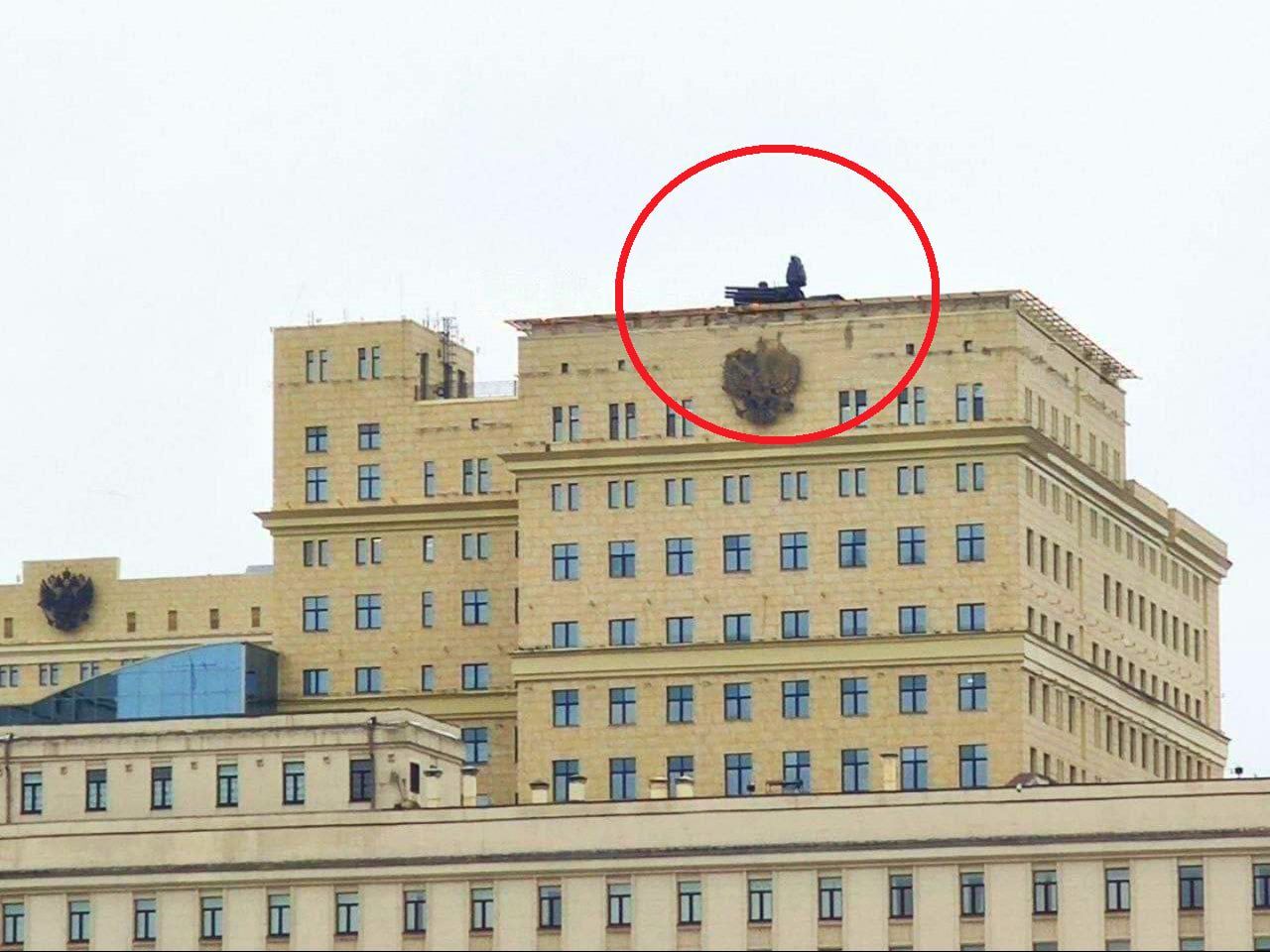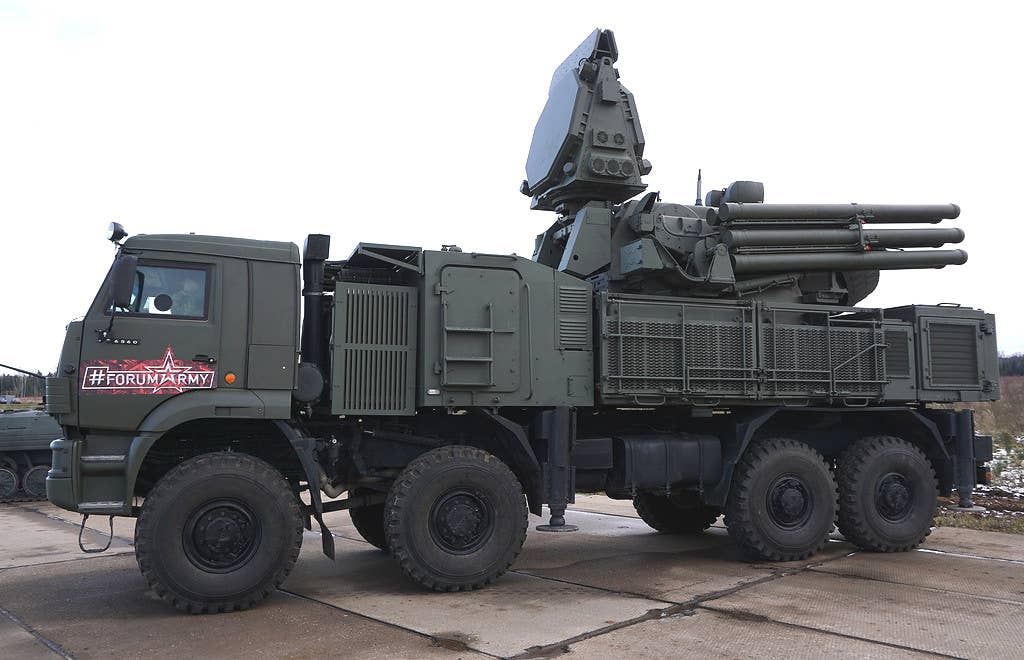The Russian military appears to have installed Pantsir air defense systems on the roofs of some defense and administrative buildings in downtown Moscow, indicating that the Kremlin is getting ready for a possible attack on the Russian capital.
Several images and videos purportedly showing Pantsir systems on rooftops started circulating on social media early on January 19.
The air defense systems were set up on an administrative structure in Moscow and the National Defense Management Center of the Russian Defense Ministry, according to Rob Lee, a senior fellow in the Foreign Policy Research Institute’s Eurasia Program and a Ph.D. candidate at King’s College London’s War Studies Department.
A picture shows a Pantsir missile system deployed on the roof of an eight-story building used by the Russian defense ministry close to the Moskva River.
Another video shows a Pantsir missile system that seems to have been craned onto a structure closer to the city center. Google Maps indicates it is the Ministry of Education building in the capital.
Russia has placed Panstir-S1 air defense systems on top of an administrative building in Moscow (55.74542, 37.65135) and the Russian MoD’s National Defense Management Center (NTsUO) on the Frunzenskaya Embankment. https://t.co/WlAM7QZlej pic.twitter.com/UG4yFv6tvX
— Rob Lee (@RALee85) January 19, 2023
Although the official justification for the apparent deployments is unknown, Ukrainian forces have proven they can carry out strikes at great distances utilizing various drones.
The EurAsian Times had previously reported that the Ukrainian Air Force launched an attack on the military installation of Russian strategic aviation in Engels on December 5.
Nevertheless, pictures of the missile systems near Moscow surfaced a day before Western defense officials were scheduled to gather at Germany’s Ramstein airfield to discuss a fresh military aid program for Ukraine.
Furthermore, there’s a chance that additional Pantsirs or other air defense units may be deployed in or near Moscow. This would be on top of the robust air and missile defense systems already in place to defend Russia’s capital.

Regarding installing air defense systems in the nation’s capital, neither the Moscow authorities nor the Ministry of Defense divulged any information. Likewise, the information that surfaced in the media has not received any response from the officials.
That being said, the placement of air defense systems around Moscow might respond to the increased threat of unmanned vehicle strikes on important locations deep within Russian Federation territory.
These attacks appear to have been carried out by various unmanned aircraft drones, including weaponized Soviet-era jet-powered reconnaissance drones and readily accessible commercial models rigged with explosives.

Pantsir Air Defense System With Upgraded Radar
The concept of deploying point defense systems like Pantsir around high-value installations as part of a layered air defense network is not new.
For instance, the US military maintains several Avenger air defense systems in comparable rooftop locations in Washington, capable of engaging a variety of aircraft threats with Stinger heat-seeking short-range surface-to-air missiles and .50 caliber M3P machine guns.
Although the exact Pantsir models visible in the images are unknown, they seem to be variations with the upgraded search radar—also known as SOTS or RLM SOC—on top.
In contrast to earlier models used on Pantsir variants, the radar, a rotating, mechanically scanned array, is visually distinguishable because it has two different fixed-face antennas rather than simply one.
The system employs two radars, one for target acquisition and the other for command-guided missile targeting. It is primarily meant to serve as a point defense system against various aerial threats, such as cruise missiles, drones, fixed-wing aircraft, and helicopters.

Additionally, it can partially combat bombs, mortar rounds, and artillery rockets. The SOTS/RLM SOC radar is rumored to improve the range at which targets can be detected, the number of targets that can be monitored simultaneously, and the accuracy with which they can be attacked.
This was reportedly the result of the lessons drawn from the less-than-stellar performance of earlier Pantsir types in Syria, particularly against UAVs. However, this Pantsir setup is not the most sophisticated one to date.
The Pantsir deployments could indicate Russia’s concerns about possible Ukrainian aerial attacks on its capital.
Even so, it is difficult to say with certainty what degree of defensive protection the Pantsirs atop the Ministry of Defense’s main office and the Ministry of Education might be able to provide.
- Contact the author at ashishmichel(at)gmail.com
- Follow EurAsian Times on Google News




